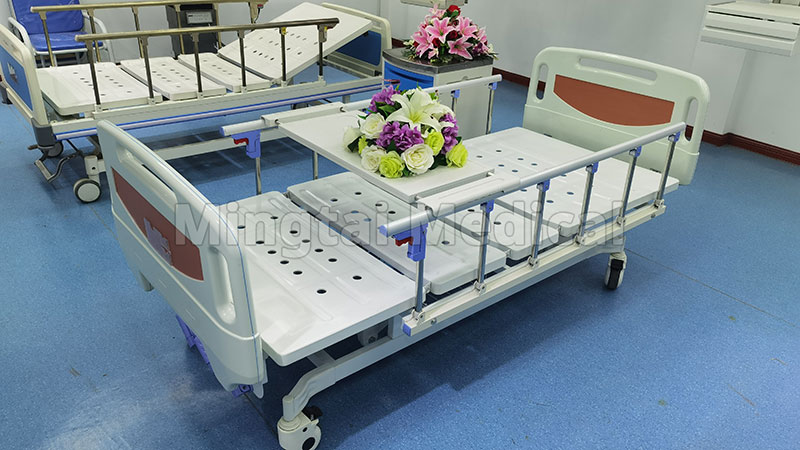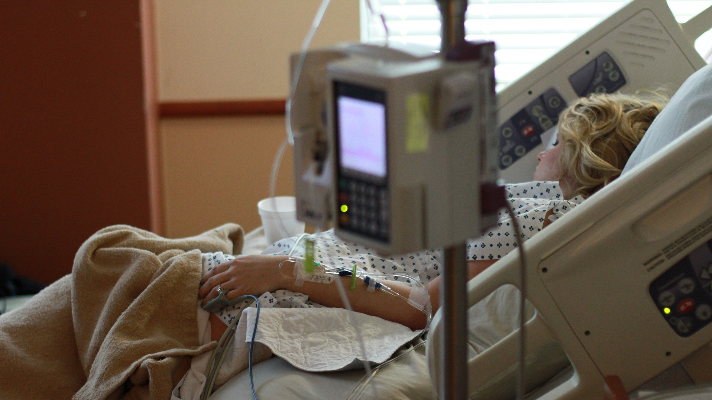The Best Guide To Hospital Beds For Home Use
The Best Guide To Hospital Beds For Home Use
Blog Article
The Basic Principles Of Hospital Beds For Home Use
Table of ContentsHow Hospital Beds For Home Use can Save You Time, Stress, and Money.The Ultimate Guide To Hospital Beds For Home UseSome Known Questions About Hospital Beds For Home Use.Some Of Hospital Beds For Home UseUnknown Facts About Hospital Beds For Home UseHow Hospital Beds For Home Use can Save You Time, Stress, and Money.Getting The Hospital Beds For Home Use To Work
There are three main kinds of healthcare facility beds: guidebook, semi-electric, and fully-electric. These beds use hand cranks to adjust the bed's height and elevate and decrease the head and the foot.
Semi-electric beds have an electrical motor to increase and lower the head and foot sections of the bed. Clients and caretakers change the placing by pushing buttons using a hand pendant. The height of the bed is readjusted manually with a hand crank. Full-electric beds have an electric motor that can increase the head and foot areas of the bed along with the whole height and positioning of the bed.
The 6-Second Trick For Hospital Beds For Home Use
There are numerous types of healthcare facility beds, each developed to meet certain individual requirements. Here are some usual kinds: This is the most common kind of healthcare facility bed, designed for basic clinical usage.
Reduced to the ground than a conventional bed. This kind of bed is created for larger clients, with a larger frame and higher weight ability than a common bed. This sort of bed is made particularly for kids, with smaller sized sizes than a standard bed. Special features such as full size side rails and anime style.
This kind of bed is developed for seriously unwell individuals that require open tracking and specialized clinical equipment such as ventilators and infusion pumps. This sort of bed is developed for use throughout labor and distribution, with flexible settings and functions to sustain the mother and infant during the birth process.
Facts About Hospital Beds For Home Use Revealed
Several feature and the accessories do broadening grip to different parts of the vertebra and the extremities without relocating the body. These are simply a couple of instances of the sorts of health center beds readily available. The particular kind of bed utilized will rely on the individual's condition, medical demands, and other aspects.
Below is the important things you need to know. A one-function medical facility bed is a medical bed that allows an individual to relocate only the head or foot area up or down. A 2 feature hospital bed usually describes a kind of clinical bed that has 2 flexible features to help patients in medical facilities or treatment facilities.

How Hospital Beds For Home Use can Save You Time, Stress, and Money.
A 7-function ICU bed is a kind of clinical bed that supplies several flexible features to sustain critically sick individuals in a critical care unit (ICU) (hospital beds for home use). The seven features commonly consist of: Backrest modification: The back-rest can be adapted to different angles to aid the client stay up or relax pleasantly
Height modification: The bed can be raised or reduced to make it much easier for patients to get in and out of bed, and for caregivers to supply treatment. Trendelenburg placement: The entire bed can be tilted to advertise blood flow and flow in the body. Reverse Trendelenburg placement: The bed can also be slanted in the opposite instructions to advertise blood flow and blood circulation in the upper body.
While more inexpensive than electric models, these beds require physical effort for modifications. The major benefits of hand-operated beds are their cost and dependability, as they do not count on electricity. The requirement for manual initiative can be a constraint in circumstances where quick modifications are essential or where caregivers deal with physical difficulties.
The smart Trick of Hospital Beds For Home Use That Nobody is Talking About
Semi-electric medical facility beds provide an equilibrium of guidebook and electric controls. These beds give an ideal middle ground in between manual and completely electric options, offering convenience of use without the complete cost of electric designs.
Semi-electric beds are fit for clients that need moderate changes to the head and foot sections however can take care of without constant height adjustments. This makes them a cost-efficient remedy for those seeking comfort and ease without the need for constant repositioning. Completely electric health center beds include electric controls for smooth adjustments to the height, head, and foot areas.
Specialized medical facility beds, such as ICU beds, lasting care beds, and bariatric beds, are very carefully designed to deal with particular medical requirements. These beds provide customized look after varied patient groups, improving both outcomes and comfort. In the complying with areas, we will explore the main sorts of specialized hospital beds, describing their specific benefits and applications.
With years of experience in manufacturing electrical direct actuators - hospital beds for home use and close partnership with the health care market, TiMOTION is well-positioned to offer dependable healthcare options. Our up and down integrated company manages every step of the production procedure, advice from style to actuator setting up, guaranteeing we deliver extraordinary value and tailored options customized to your particular requirements
Facts About Hospital Beds For Home Use Uncovered

To find out more regarding integrating these modern technologies right into your products, call us today. Further reading:.
Information is sourced from the Medicare Price Report.

The Buzz on Hospital Beds For Home Use
A health center bed is a bed created specifically for clinical objectives. It is not just a location for individuals to relax, yet additionally a system for medical operations. Unlike common home beds, health center beds usually have flexible functions, which can assist in clinical team to make different adjustments according to the needs of individuals, such as transforming the elevation, disposition, and assistance angle of the back and legs of the bed.
Report this page